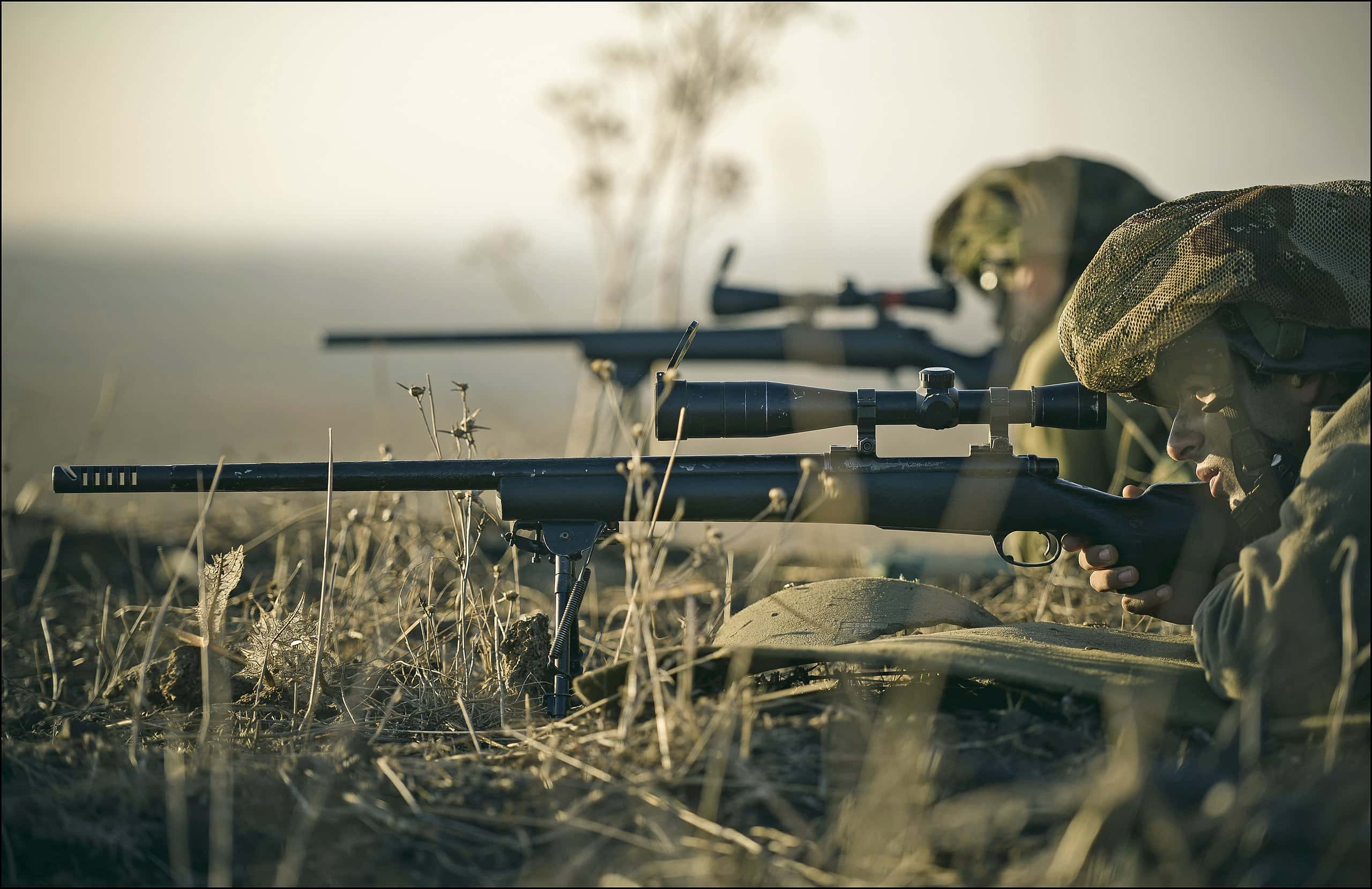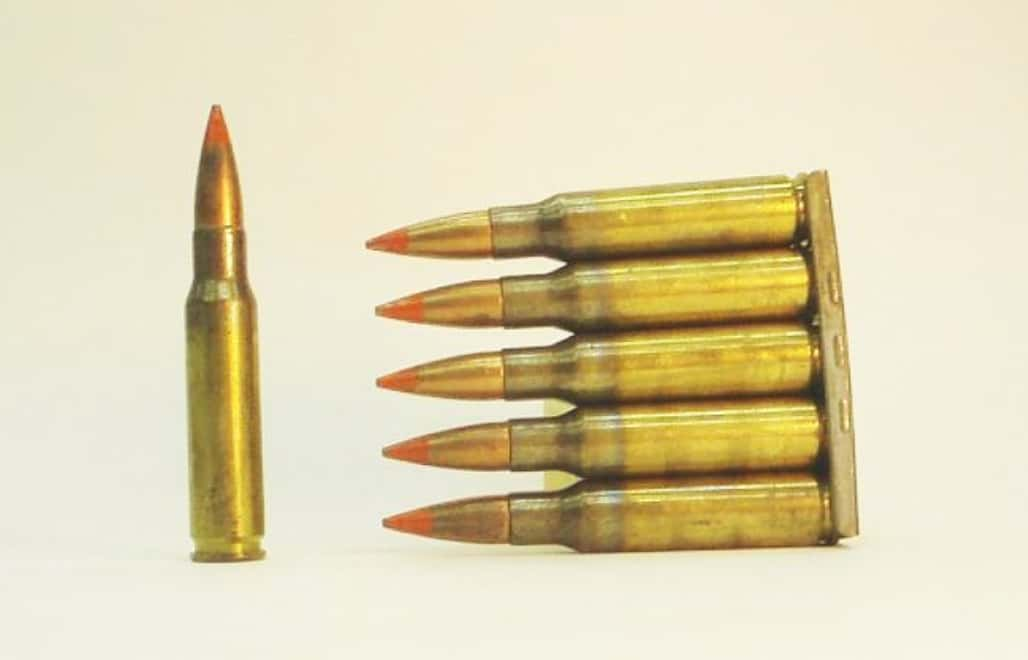“People ask me all the time, “How many people have you killed?” My standard response is, “Does the answer make me less, or more, of a man?”—Chris Kyle
One shot, one kill. That’s the popular motto of snipers, the firearm operators that have been feared and revered around the world for over a hundred years. The sniper changed warfare, making it possible to take out high priority targets with a precision that had never been seen before. Whether they're bullseyes or longshots, these 24 facts about snipers are a sure-fire way to learn more about these surgical military operatives and the guns that make them so deadly.
Snipers Facts
24. Police vs. Military
Police-use sniper rifles tend to be employed at much lower distances than military-use sniper rifles, which are used at the greatest effective distances to take tactical advantage of the weapon's capabilities. Because military snipers are often up against similar equipment, military snipers must exploit their advantages as much as possible to gain the upper hand in life-and-death situations.
23. The Fashionable Bullet
The current standard for sniper rifles in the West is the 7.62x51mm NATO cartridge, which was introduced in the all the way back in the 1950s. Before this standardization, the US, UK, and Germany all used different cartridges, while Russia has used the 7.62x54 mm R, a similar cartridge to the 7.62x51mm, since 1891.
22. Far, Far Away
The longest recorded sniper kill shot is currently held by an unnamed sniper in Joint Task Force 2 of the Canadian Armed Forces. Said shot was from a distance of 3,540 meters, and was fired during an operation in Iraq, killing an Islamic State insurgent some time around May of 2017. The previous record was a kill shot from 2,475 meters by Craig Harrison of the British Armed Forces, in Afghanistan in 2009.
21. The First Sniper
The Whitworth rifle is considered the world’s first sniper rifle. It was designed in 1854 and produced from 1857-1865 by British entrepreneur Joseph Whitworth. It was capable of hitting its target at 1,400 yards, or about 1,280 meters, and was primarily used by the Confederacy in the American Civil War.
20. Word History
The word "sniper" was first used in English language to describe sharpshooting by British soldiers occupying India in the 18th century, and was adapted from the act of hunting snipes, a species of game bird whose erratic flight patterns made it extremely hard to shoot. The term sharpshooter, a transliteration of the german term scharfschütze, was adapted at around the same time period.
19. Gun vs Gun
Snipers often shoot people, but sometimes they save them, too. In 1993, Douglas Conley was sitting on a lawn chair with a handgun, threatening to commit suicide if the police got too close. The police slipped him a shaken can of beer that made him change his posture, at which point SWAT officer Michael Plumb shot the gun out of Conley’s hand. Camouflaged officers posted nearby quickly dogpiled Conley and took him into custody.
18. Not Even Close
Matt Hughes, a sniper with the British Royal Marines in 2003, once made a reality-defying shot by pointing his rifle 56 feet off from where his target was visually. With the assistance of his partner, Sam Hughes, the pair performed calculations that compensated for the extreme distortion from the heat haze, as well as the powerful winds on that day. The shot on the unsuspecting victim allowed the British troops to push forward and secure a strategically important peninsula.
17. Action-Packed
Sniper rifles are typically either bolt-action or semi-automatic. Bolt-action rifles manually load and replace bullet cartridges by hand-operated mechanisms. While manual chambering makes the time between shots longer than in semi-automatic rifles, bolt-action rifles are usually more reliable, accurate, and lighter due to the simpler mechanism.
16. Femme Fatale
Lyudmila Pavlichenko of the Soviet Union was the most successful female sniper of all time with 309 kills, 36 of which were enemy snipers. Pavlichenko fought against Nazi Germany in World War II instead of becoming a nurse. Her streak stopped when she was injured in combat, at which point she was pulled from the front lines, becoming somewhat of a celebrity figure.
15. Girl Power
Pavlichenko wasn’t the only female sniper in the Red Army. There were 2,000 of them, in fact, though only 500 survived the war. While Pavlichenko joined the army when “women were not yet accepted,” the presence of 2,000 snipers was a remarkable female frontline presence in a previously male-exclusive war culture.
14. Killer Relations
Pavlichenko's fame was used to greatly benefit ally relations, as she was invited by the Roosevelts to tour the United States as a celebrity figure to inspire American support for the Allies. She also visited the UK and received donations of medical devices for the Red Army. Palivchenko’s personal friendship with Eleanor Roosevelt persisted during the Cold War, when the latter visited her in 1957.
13. Keeping Busy
Simo Häyhä, a Finnish sniper, holds the record for most confirmed kills of any person. He reportedly killed between 505 and 542 men over a course of just 100 days (though only roughly half of these were sniper kills, the rest by submachine gun) during the 1939-1940 Winter War between Finland and the Soviet Union—that’s more than five a day.
12. Pioneer Techniques
Häyhä did not use a scope on his rifle, preferring his personal rifle with iron sights for its less conspicuous profile (easier to hide) and more familiar operation. While modern sniping principles had not yet been fully developed, Häyhä used several techniques to remain hidden, such as keeping snow in his mouth to hide his breath in cold weather.
11. Stalkers
In order to remain unnoticed in their surroundings, modern snipers work in heavy camouflage, and undergo training to learn how to move in a slow, deliberate way that becomes very difficult to spot. This training is called stalking, and is deliberately more difficult than movement in real missions.
10. Expensive Pastimes
If you’ve got a large of amount of disposable income and really have the itch to try it for yourself, an average sniper rifle will cost you somewhere between $8,000 and $15,000. For example, the longest kill shot record-setting weapon, the TAC-50, retails for $14,999, though it’s not the sort of thing to try at home.
9. Buddy System
Due to the complicated nature of modern sniping, snipers often work in at least pairs, with one person spotting and the other person sniping. The spotter often carries a much stronger scope than the sniper in order to guide the sniper from behind, often helping with aim adjustment and, when carrying out reconnaissance, taking turns with the sniper on observation.
8. Quick Math
Modern snipers engage in long range shooting, which accounts for many potential complications in long distance bullet trajectory, such as gravity, wind, and air pressure. Because of these factors, sniping is much more complicated than simply pointing and shooting, and long range shooting has enough of an amateur sport following to have a world championship.
7. Specialized Equipment
Sniper rifles are designed with accuracy and range in mind, and contain features that facilitate the operation of the rifle as well as enhance the rifle’s range and stability. This can include a telescopic sight (or scope), as well as heavier and longer barrels.
6. Canadian Sniper
The sniper with the most kills in the First World War was Francis Pegahmagabow, a Canadian from the Shawanaga First Nation reserve in Ontario, with 378 confirmed kills (and more unconfirmed kills). Incidentally, this is greater than the kill records for the US, UK, and Australia in the war combined. Pegahmagabow would later serve as the Chief of the Wasauksing First Nation. There’s a statue of him today in Parry Sound, Ontario.
5. American Sniper
Chris Kyle, the US navy seal with 160 official confirmed kills whose life was the basis for the 2014 top-grossing movie American Sniper, was shot to death in 2013, along with his friend, by discharged marine Eddie Ray Routh. Kyle and his friend were taking Routh to the shooting range in an effort to assist him with his PTSD. They were both armed when they were killed.
4. Looking Around
As much as movies and video games put forward the image of the efficient sniper who single-handedly takes hundreds of lives, modern military snipers are usually given the main task of reconnaissance—in other words, to survey the surroundings and enemies for strategic information.
3. Getting Ahead
In the first World War, soldiers placed in trenches would create papier-mâché heads to stick out in order to draw fire. The bullet holes in the fake heads would be then used to determine the angle that the sniper was firing from, which allowed counter-sniping or shelling. And as an added plus, arts and crafts day must have been a welcome break from the sheer misery of living in the trenches.
2. Wall Hack
US Marine Steve Reichert once shot an insurgent from a mile away, which is already quite impressive. However, even more impressive is the fact that his victim was standing behind a wall; Reichert took an educated guess on the position of his targets, and the armor-piercing round did the rest. The shot also possibly wounded two other men from the brick fragmentation.
1. Bullseye
During the Vietnam war, US Marine Carlos Hathcock, known to the North Vietnamese Army as the “White Feather” for the feather he kept in his hat, had a bounty of $30,000 (about $220,000 present day) on his head for the kills collected under his belt. At one point, Hathcock entered a lengthy engagement with an enemy sniper, which ended with Hathcock shooting a bullet right through the enemy’s rifle scope, hitting him in the eye.
Sources: 1, 2, 3, 4, 5, 6, 7, 8, 9, 10, 12, 13, 14, 15, 16, 17, 18, 19, 20, 21, 22, 23, 24

